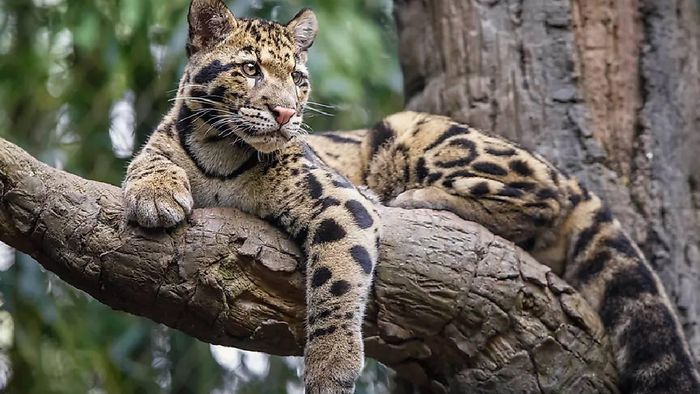Clouded leopards in Assam’s Manas National Park play hide-and-seek with other carnivores, reveals new study
A new study by two scientists from the Wildlife Institute of India (WII) has revealed that the clouded leopard in western Assam’s Manas National Park and Tiger Reserve play a mysterious game of hide-and-seek in the tropical canopy forests, claiming their personal territory.

- Aug 06, 2023,
- Updated Aug 06, 2023, 12:38 PM IST
A new study by two scientists from the Wildlife Institute of India (WII) has revealed that the clouded leopard in western Assam’s Manas National Park and Tiger Reserve play a mysterious game of hide-and-seek in the tropical canopy forests, claiming their personal territory.
A striking coat pattern adorned with cloud-like spots, the clouded leopard is an enigmatic cat possessing a unique blend of agility, strength and adaptability found mainly in the dense forest of Southeast Asia.
Manas National Park in Assam is a safe haven for the clouded leopard and home to a diverse array of flora and fauna, including the iconic Bengal tiger, greater one-horned rhinoceros and Asian elephant, each exhibiting its own fascinating web of coexistence with different species of carnivores with iconic hunters such as tiger, leopard, dhole all occurring within this rich landscape.
Together, these sympatric carnivores showcase the intricate web of interactions and interdependencies that shape the ecosystem, underscoring the need to protect their habitat in an effort to ensure their continued coexistence.
The two scientists – carnivore ecologist Salvador Lyngdoh and research scholar Urjit Bhatt, both from the department of landscape-level planning and management at WII conducted an ecological study in Manas National Park between December 2016 and November 2019, in collaboration with the Wildlife Institute of India, Dehradun and the Science and Engineering Research Board, New Delhi
During their study, the two scientists observed that the spatial distribution of clouded leopards appeared to be random, as if they play a mysterious game of hide-and-seek! No clear patterns of avoidance or co-occurrence with other predators.
The feline carnivores seemed to go wherever they pleased, escaping into treetops when they encounter large predators. The scientists called the clouded leopards as the ninjas of the forest known for their striking agility and strength, as mentioned in the study.
“Our work demonstrates that Manas National Park is an important refuge for clouded leopards in north-east India because of its intact primary forests and the presence of numerous small prey species. Our findings point to some level of spatio-temporal segregation facilitating the coexistence of clouded leopards with other sympatric carnivores, suggesting a partial avoidance that could minimize competition as well as reduce the risk of intraguild predation”, the study further mentions.
The clouded leopard is categorised into two species: the mainland clouded leopard distributed from central Nepal to peninsular Malaysia, and the Sunda clouded leopard (Neofelis diardi) native to Borneo and Sumatra.
The mainland clouded leopard is tagged vulnerable on the International Union for Conservation of Nature (IUCN) Red List and is considered at high risk of extinction in the wild due to deforestation and poaching.
Also read : Assam: Police open fire at auto driver in Diphu, officer arrested